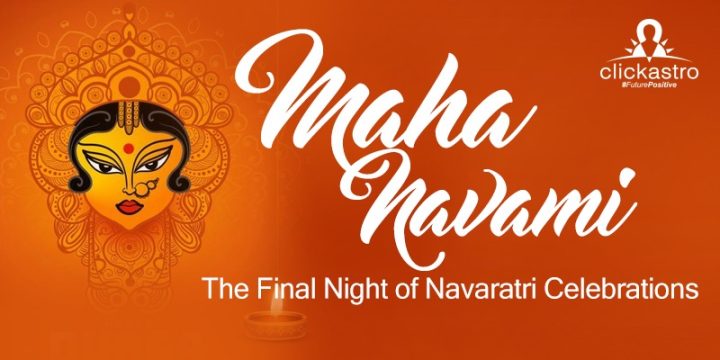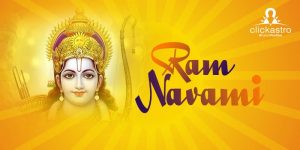Maha Navami – The Culmination of Navaratri
The Navaratri festival is a major auspicious occasion for Hindus and is celebrated with great fervour and pomp, in all parts of India, but especially in states like West Bengal and Gujarat. The ninth day of this celebration is called Maha Navami, which means ‘the great ninth day’. It is also the ninth lunar day and considered the most important day of Navaratri celebrations, followed by the festival of Dussehra. The festival is dedicated to Mother Goddess or Devi Durga, and the celebrations are conducted in remembrance of Goddess Durga defeating the dreaded demon Mahishasur. The festival, therefore, celebrates the victory of good over evil.
The festival goes on for nine days as it is believed that the battle between Goddess Durga and Mahishasur went on for a period of nine days, culminating in Maha Navami, when the Goddess, in the form of Mahishasurmardini, finally killed the demon. It is believed that Maha Navami is an auspicious occasion to start new ventures, leading into Vijaya Dashami or the tenth lunar day.
Maha Navami 2022 is on October 4 Tuesday.
Maha Navami 2022 Important Timings
- Sunrise : October 4, 2022 6:16 AM
- Sunset : October 4, 2022 6:04 PM
- Navami Tithi Starts : October 3, 2022 4:37 PM
- Navami Tithi Ends : October 4, 2022 2:20 PM
- Sandhi Puja Muhurta : October 3, 04:13 PM to 05:01 PM
Navami Homa
A significant ritual during Durga Puja, is performed on Maha Navami, the third day of Puja celebrations. You should perform Homa at the end of Navami Puja and remember that, if Ashtami and Navami fall on the same day, before Sanyakal on Ashtami Tithi, then Ashtami Puja and Navami Puja, including Sandhi Puja, should be done on the same day. Depending on the starting time of Navami Tithi, the Maha Navami Puja and Upavas can be completed on the previous day, which is Ashtami Tithi. However, Durga Balidan is always held on Uday Vyapini Navami Tithi and the most appropriate time to perform Balidan on Navami is Aparahna Kaal.
Different Ways of Celebrating Maha Navami
While Maha Navami is celebrated all over India, the Navratri celebrations and rituals followed in various regions in India are different. The nine days of
Navratri are spent in worship of nine different manifestations of Goddess Durga
- Shailaputri
- Brahmacharini
- Chandharghanta
- Kushmanda
- Skandamata
- Katyayani
- Kalratri
- Mahagauri
- Siddhidatri
In many places, people worship the ninth formm Goddess Siddhidatri, on Maha Navami but in southern regions of India, Goddess Saraswati —the deity of knowledge and wisdom, is worshipped on this day.
North India bears witness to Kanya Puja, a major Navratri ritual observed on the day of Maha Navami, involving worship of nine young girls. The young girls are invited to people’s homes and worshipped as the nine different forms of Goddess Durga. Some parts of the country also worship goddesses Lakshmi and Saraswathi and the gods Ganesha and Karthikeya on Maha Navami. In West Bengal, Assam, Odisha, Tripura, Jharkhand, and Bihar, Maha Navami is celebrated with great fervour and devotion. It is celebrated as the third day of Durga Puja in the Eastern states, where large Pandals (tents) are erected, which have beautifully decorated idols of the goddess in her Mahishasuramardini avatar. Maha Navami marks the culmination of the famous Durga Puja celebrations in West Bengal.
Gujarat is known for its Garba (an ethnic dance form) functions, which form an important part of Maha Navami celebrations. In South India, Maha Navami is mainly dedicated to Goddess Saraswati. Ayudha Puja – the worship of implements, Pusthaka Puja – the worship of books and other study materials, Suhasini Puja, etc., are some of the important Maha Navami rituals that are witnessed in this region.
Importance of Maha Navami
A highly auspicious day, Maha Navami – the ninth day of the 10-day Navratri festival, commemorates the nine-day battle of Goddess Durga against the demon Mahishasur and her victory over evil. As per the legend, on the ninth day (Navami) of the battle, Goddess Durga took the form of Mahishasuramardini and made the final attack on the Buffalo demon which eventually killed him the next morning. So, on Maha Navami, Goddess Durga is also worshipped as Mahishasuramardini, which means ‘the slayer of Mahishasur’. Maha Navami is also considered as the eve of starting anything new on
Vijaya Dashami/Dussehra.
It is believed that celebrating Maha Navami Puja is equivalent to observing all nine days of Navaratri, with people also believing that those who observe the days of Durga Ashtami, Maha Navami, and Vijaya Dashami do not really need to observe any other festival. From the astrological point of view, worshipping the goddess on Maha Navami can nullify the bad effects or doshas of planets viz. Mars, Saturn, Rahu, and Moon. People who suffer from enemies, legal battles, disputes, and other adversaries are advised to worship Durga Devi on the day of Maha Navami. Maha Navami also holds great importance for the Vaishnavas and the occult among the Saktheyas. In Tirumala Temple, the Brahmotsav is celebrated to honour Lord Balaji (Vishnu) on this day.
Maha Navami Rituals You Should Follow
The rituals you follow will depend on which part of the country you belong to. Some northern and eastern states observe Kanya Puja, also known as Kanya Pujan or Kanjak, on Maha Navami, by worshipping nine young girls as the nine manifestations of the goddess Durga. This worship is done because of the belief that young girls are representations of the divine femininity (Goddess Shakti/Durga) on earth. Devotees invite nine girls to their homes by washing their feet and worship them with kumkum, sandalwood paste, incense sticks, and chanting of mantras. After that, specially prepared food items, like halwa puri and chana, and new clothes are gifted to the girls. Some regions also worship a boy, along with the nine girls, and he is considered a manifestation of Lord Bhairav, the brother of Goddess Durga.
In the eastern states of India, Maha Navmi is celebrated as the third day of Durga Puja. The celebrations begin with Mahasnan (holy bath), followed by special observances called Shodashopachar Puja. In West Bengal, Maha Navami marks the culmination of the Durga Puja festival and large tents called ‘’pandals’’ are erected. These tents have beautifully sculpted idols of the goddess in the Mahishasuramardini avatar. Distribution of sweets and gifts, chanting of Devi Mahatmya, which details the legends of the goddess, and visiting the pandals and temples with family are parts of Durga Puja celebrations. The celebrations end with Dashami – when the idols are immersed into water bodies, as part of the visarjan ritual.
In South India, Ayudha Puja or Shastra Puja is an important ritual dedicated to Goddess Saraswati. Tools and implements used for work and study are worshipped along with the goddess, as a way of worshipping one’s own profession or the implements that help one to earn a livelihood. The occasion of Maha Navami holds great importance for students. Vidyarambham – the ritualistic introduction of children into the world of knowledge is a major tradition followed in Kerala and Tamil Nadu. It is usually observed on the day of Vijaya Dashami, during which children of age 2 – 4 are introduced into the world of letters with the blessings of the goddess.
South Indians also follow the ritual of Suhasini Puja, performed by married women who are considered as a symbol of Maha Shakti. In some areas of Andhra Pradesh, the Batthukamma festival is observed, celebrating the glory of womanhood. Women dress in new clothes and arrange flowers in a typical seven-layer conical shape to offer to Goddess Gauri. In Karnataka, Maha Navami is the day before Dussehra. In the city of Mysore, the day is celebrated with an exuberant custom of worshipping and carrying the Royal sword in a procession involving illustrated elephants and camels.
Whatever ritual you may follow, and whichever state you may belong to, Maha Navami is a festival honouring the victory of good over evil, and is celebrated on a large scale in India.








